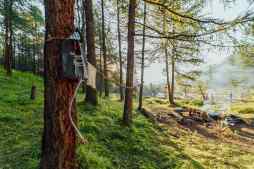Community Involvement in Rewilding Europe: Bringing Back Biodiversity Together

Rewilding Europe is a groundbreaking initiative focused on restoring lost landscapes and revitalizing biodiversity across the continent. Central to its success is the involvement of local communities, who play a vital role in reintroducing native species, managing habitats, and fostering sustainable coexistence with nature. This article explores how community engagement drives the rewilding efforts and contributes to Europe’s ecological restoration.
What Is Rewilding Europe?
Rewilding Europe is an ambitious conservation movement aiming to restore natural processes and wildlife populations to areas where they have diminished or disappeared. By allowing ecosystems to regenerate naturally, it seeks to create robust wilderness areas that support diverse flora and fauna. The project focuses on reconnecting fragmented habitats, promoting ecological corridors, and encouraging natural grazing dynamics.
The Importance of Community Involvement
Local communities are at the heart of rewilding efforts because their knowledge, participation, and support are crucial for long-term success. Engaging residents ensures that restoration projects align with social and economic realities while fostering stewardship over natural resources. Community members contribute by monitoring wildlife, participating in habitat management activities, educating others about biodiversity benefits, and supporting sustainable tourism initiatives linked to rewilded landscapes.
Successful Examples of Community Participation
Several regions across Europe have demonstrated how community involvement enhances rewilding outcomes. For instance, in the Danube Delta area shared by Romania and Ukraine, local fishers collaborate with conservationists to balance traditional livelihoods with wetland restoration goals. Similarly, in Spain’s Iberian Peninsula rewilding sites, farmers integrate wildlife-friendly practices such as rotational grazing that supports both agricultural productivity and ecosystem health.
Challenges Faced by Communities in Rewilding Projects
While community engagement offers many benefits for rewilding projects, challenges remain. Some residents may fear changes affecting their way of life or livelihoods due to increased wildlife presence or land-use restrictions. Overcoming skepticism requires transparent communication about ecological advantages alongside socioeconomic incentives like job creation through eco-tourism or conservation work opportunities.
How You Can Support Rewilding Efforts Locally
Individuals interested in contributing can join voluntary monitoring programs organized by regional groups involved in Rewilding Europe. Supporting local businesses that promote nature-based tourism helps sustain economic incentives tied to restored ecosystems. Raising awareness about the importance of biodiversity through social media sharing or educational workshops also strengthens public backing for these critical environmental initiatives.
Rewilding Europe’s vision depends heavily on vibrant partnerships between conservationists and communities living alongside restored landscapes. By working together toward common goals—bringing back lost biodiversity while maintaining human well-being—Europe sets an inspiring example for global nature recovery efforts.
This text was generated using a large language model, and select text has been reviewed and moderated for purposes such as readability.











